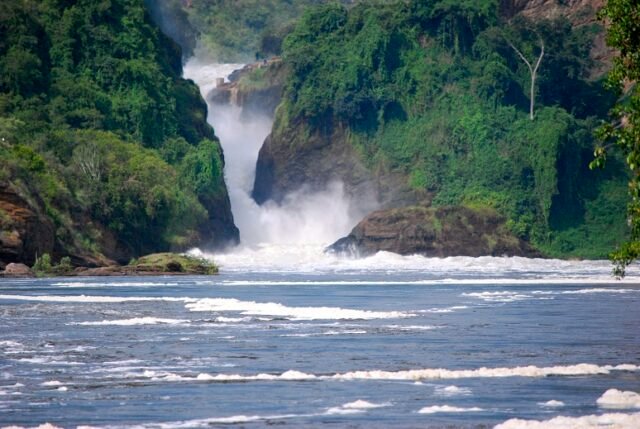The Ssezibwa Falls is a fountain of natural beauty and cultural significance in Uganda, and sad enough is that, it is slowly fading away. This is leaving locals fearing for their livelihoods and a nation grappling with the potential loss of a national treasure. What’s causing this ecological tragedy, and can it be reversed?
Let us dive in the devastating impact of the dwindling water levels at the Ssezibwa Falls, examining the contributing factors and outlining the ongoing efforts to combat this environmental crisis.
The Ssezibwa Falls are located just 32 kilometers from Kampala city, are more than just a picturesque landscape. They are a source of livelihood for many, supporting fishing, agriculture, and a burgeoning tourism industry.
The falls, formed by water cascading through a narrow opening of rocks, plunge 17 meters into a deep pool, creating a mesmerizing spectacle that draws visitors from far and wide. However, this natural wonder is under threat.
For the past nine years, the water levels have been receding, jeopardizing the delicate ecosystem and the livelihoods it supports. Locals like Francis Muwambi, a tour guide at the falls, witness this alarming trend firsthand.
Muwambi highlights the stark reality, stating that the once-powerful falls are now a shadow of their former selves, with water levels visibly reduced, particularly during dry seasons. The fear of the falls disappearing entirely looms large, raising concerns for the future of the region.
The Root of the Problem
The shrinking of the Ssezibwa River, the lifeblood of the falls, is a complex issue with several contributing factors. Eng. Maximo Twinomuhangi, team leader of the Kyoga Management Zone in the Ministry of Water and Environment, points to climate change as a primary driver.
Altered rainfall patterns, characterized by either insufficient precipitation or intense downpours over short periods, disrupt the river’s natural water flow, leading to decreased water levels. Compounding the issue are unsustainable land management practices within the Ssezibwa catchment area.
The increasing demand for land for agriculture, particularly rice cultivation, has led to the encroachment upon the Ssezibwa wetland. The construction of irrigation channels to divert water for farming further disrupts the natural flow of the river, exacerbating the water scarcity issue.
Conservation Efforts Underway
Despite the dire outlook, hope remains for the Ssezibwa Falls. Recognizing the severity of the situation, authorities and environmental organizations have initiated efforts to combat the river’s degradation and restore the ecosystem.
One key initiative is the development and implementation of the Ssezibwa Catchment management plan, overseen by the Kyoga Management Zone. This comprehensive plan emphasizes a multi-pronged approach, focusing on reforestation efforts, promoting sustainable land use practices, and addressing poverty within the catchment area to alleviate pressure on natural resources.
Furthermore, the government is taking concrete steps to mitigate encroachment on the wetlands, which play a crucial role in regulating the river’s water flow. These measures include issuing stop notices to encroachers, demarcating river boundaries, and engaging in sensitization campaigns to educate the public about the importance of preserving the wetlands.
ALSO READ: UK Job Market Booming: Thousands of Visa Sponsorship Opportunities Await!
Looking towards long-term solutions, authorities are exploring the feasibility of strategic water harvesting and storage during periods of abundant rainfall. This stored water could then be released during dry spells, ensuring a more consistent water flow in the river and mitigating the impact of erratic rainfall patterns.








